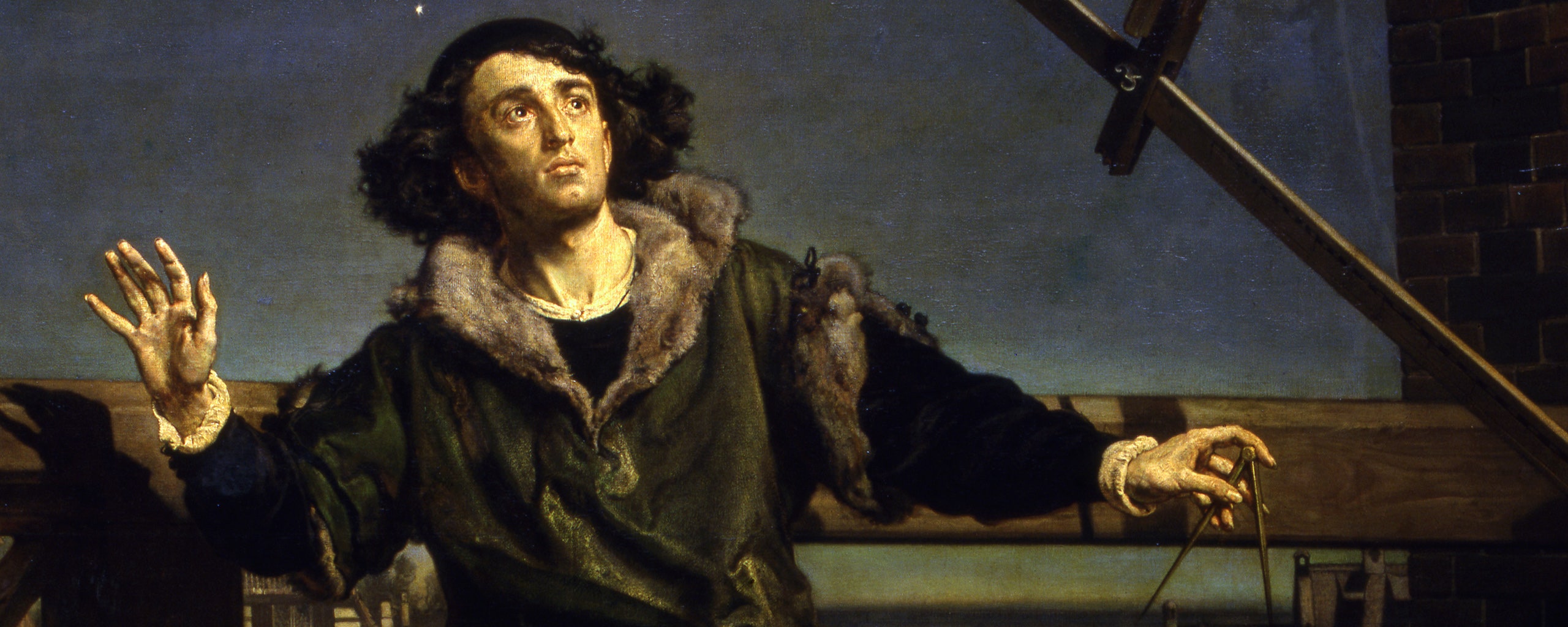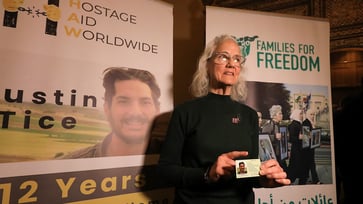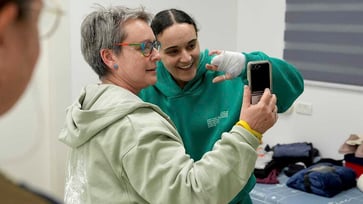Nicolaus Copernicus: The individual who brought the sun to a halt and relocated the Earth
The quest to comprehend the universe, from Nicolaus Copernicus to the James Webb Space Telescope, remains a persistent endeavor of humanity.

The town of Frombork, situated on the northern Polish coast, is a tranquil and compact community nestled on the shores of the Vistula Lagoon.
During the summer, a ferry transports passengers from the port to the Vistula Split, a popular destination known for its pristine beaches along the Baltic Sea coast.
An imposing red brick cathedral and castle complex can be found on top of a hill, overlooking the bay.

In the 16th century, the Copernican Revolution took place in Frombork, not a violent upheaval, but a shift in thinking about the universe.

The historic complex houses a statue of Nicolaus Copernicus, and during the day, tourists and astronomy enthusiasts visit the museum and watch a star-studded show at the planetarium.
The night sky above the bay is illuminated by thousands of celestial bodies, including the Big Dipper, or the Great Bear constellation, which hangs in the northern sky above the grand cathedral. For over 30 years, Copernicus resided in this town and penned his groundbreaking work, "On the Revolutions of the Heavenly Spheres," which fundamentally altered humanity's understanding of the cosmos and our place within it. This treaty on astronomy marked a significant turning point in the way we comprehend the universe.

Mikolaj Kopernik, later known as Copernicus, was born in Toruń on the Vistula River to wealthy merchant parents. He was the youngest of two children.

Mikolaj, the youngest of three siblings, grew up in a happy and elegant home with two sisters and a brother. However, when he was just 10 years old, his father passed away, leaving the family devastated. His maternal uncle, Lucas Watzenrode, stepped in to take care of the Kopernik children.

Mikolaj enrolled at the University of Kraków, where he developed an interest in astronomy and began signing his name in Latin as Nicolaus Copernicus.

Nicolaus was encouraged by his uncle, who had become a bishop in Varmia, to study canon law and was allowed to continue his education at the University of Bologna and then in Padua.
While studying math and medicine, Copernicus, a young Renaissance man, also learned art from Italian masters and painted a self-portrait. Historians claim that he gave lectures on math during his visit to Rome.

In Bologna, he reportedly met with the university's principal astrologer, Domenico Maria De Navarra, and remained attentive to celestial events. Eventually, Copernicus obtained a degree in canon law from the University of Ferrara and returned to his homeland in Poland.
As a church canon in his uncle's service, Copernicus undertook various responsibilities, including managing church finances, collecting rents from church-owned lands, and overseeing mills, a brewery, and a bakery. He also utilized his medical knowledge to care for the sick. Following his uncle's passing, Copernicus relocated to Frombork and continued working for the church. Despite his busy schedule, he made time for his newfound passion, which would eventually become his greatest accomplishment in life - astronomy.

At the time, the solar system appeared vastly different. The Earth was positioned at the center of the cosmos, with the sun, moon, and other celestial bodies orbiting it.

The sun's movement from east to west and the moon and stars' appearance in the sky were clearly visible, as depicted in the Holy Scriptures.
On the other hand, the Earth did not seem to be moving.

In the second century AD, Claudius Ptolemy, an Alexandrian mathematician and astronomer, developed a geocentric system in his treatise Almagest. He created a complex model to explain how the sun, moon, and planets revolved around the Earth. For almost 1,500 years, his theory was widely accepted as the truth until a young man from Poland, using advanced mathematical knowledge, discovered that the system did not accurately represent the movements of celestial bodies.

The realization that the Earth was not at the center of the solar system, but along with other planets, orbited the sun instead, must have been exhilarating for Copernicus when he had his "aha" moment.
Discovering that the Earth rotates daily on its axis and that the tilted axis causes seasonal changes was a groundbreaking revelation.

Although thrilled he may have been, Copernicus did not have the privilege of announcing his findings to the world and shouting "Eureka!" like Archimedes of Syracuse.
An amateur astronomer from Poland, Copernicus, kept his discovery a secret and had to find a way to present it without causing trouble. Who would believe an amateur astronomer from Poland claiming that the science, church, and Bible's teachings about the surrounding heavens were not entirely accurate?
Copernicus was cautious not to be ridiculed by other scientists or to anger church leaders, who were already dealing with Martin Luther's reformation.
Scholars claim that Copernicus disclosed his findings gradually, initially discussing the topic with friends and religious leaders and distributing pamphlets. Some church leaders supported him, while others were less accepting.

Martin Luther dismissed Copernicus as an attention-grabbing opportunist when he heard rumors about his theory.
Luther stated that the fool's attempt to overturn the entire field of astronomy is similar to Joshua's request to halt the sun's movement rather than the earth.
In the meantime, Copernicus continued with his everyday duties in Frombork.

As the envoy of Sigismund I the Old, the Polish King, he negotiated a peace treaty with the Order of Teutonic Knights. Additionally, Copernicus recognized the significance of a stable currency and, at the King's request, wrote a treatise on managing inflation, stating that four factors contribute to the decline of kingdoms, principalities, and republics: discord, mortality, barren land, and cheap money.

Despite being a visionary scientist, Nicolaus Copernicus exercised caution in sharing his discoveries and delayed publishing his manuscript for many years. He only had a finished copy of his book on his deathbed. It must have been an incredible feeling to revolutionize astronomy by stopping the sun, moving the Earth, and ushering in the modern age of science.
On May 24, 1543, Nicolaus Copernicus passed away and was laid to rest at Frombork Cathedral.

The Enlightenment commenced in 1616 when Galileo Galilei, an Italian, announced that he had proven, through his telescope, the accuracy of Copernicus' theory.
The church leaders were somewhat more relaxed with the new heliocentric model of the solar system, but they cautioned Galileo against promoting it. In the same year, they prohibited the publication of Copernicus' De Revolutionibus. However, 16 years later, Galileo was investigated and placed under house arrest for advocating for heliocentrism in his "Dialogue on the Two World Systems."

The fascination with the universe and our place in it has persisted throughout history. Advancements in 20th Century rocket science allowed for the launch of the first man, Soviet cosmonaut Yuri Gagarin, into space, sparking the U.S.-Soviet space race.
In 1961, President John F. Kennedy declared that the US would aim to land on the moon. In 1969, Neil Armstrong became the first human to walk on the lunar surface, proclaiming, "One small step for man, one giant leap for mankind."
In 2022, NASA's James Webb Space Telescope captured stunningly colorful images of nebulas, stars, planets, and galaxies, but these images were not of current celestial events, but rather those from a distant past, some billions of years in the past.

If the laws of physics limit our ability to observe distant objects in the past, would any intelligent beings searching for us only be able to view images of our galaxy's distant past? If we cannot see them now or they cannot see the Milky Way now, is it worth the effort to look?
Penn State professor of astronomy and astrophysics Jason Wright assures us.
"While we can observe very distant objects as they appeared in the distant past, the nearest stars, where signals from intelligent beings would be easiest to detect, are not that far away. The nearest system, Alpha Centauri, is just four light years away, meaning that if we detected a signal from them, it would have been sent only four years ago. There are approximately 15,000 stars within 100 light years, all of which we see as they were within a human lifetime ago."
The James Webb Space Telescope, launched over five and a half centuries ago, is providing us with a never-before view of the universe.
NASA is set to return to the moon in September 2026 with the Artemis III mission, marking the first lunar landing since 1972.
NASA Administrator Bill Nelson announced that the moon will be returned to in a new way, as he stated in a recent declaration.
Who will be the first to reach Mars? The U.S., China, or Elon Musk? It's still uncertain.

Astronomy enthusiasts worldwide look up to Nicolaus Copernicus as an inspiration, despite the scientific study of the universe having advanced significantly since the Copernican Revolution in Frombork.
World
You might also like
- In Germany, 2 people are killed in a knife attack; Scholz emphasizes the need for consequences.
- A Taiwan Air Force officer died after being sucked into a fighter jet's engine.
- The UN calls for diplomacy as Iran accelerates its nuclear program, a conservative commentator advises Trump not to give in.
- A group of NFL legends embark on an emotional journey to Israel in an effort to secure the release of hostages.
- Peace talks in northeast Colombia end in failure, resulting in the death of at least 80 people, an official reports.



















